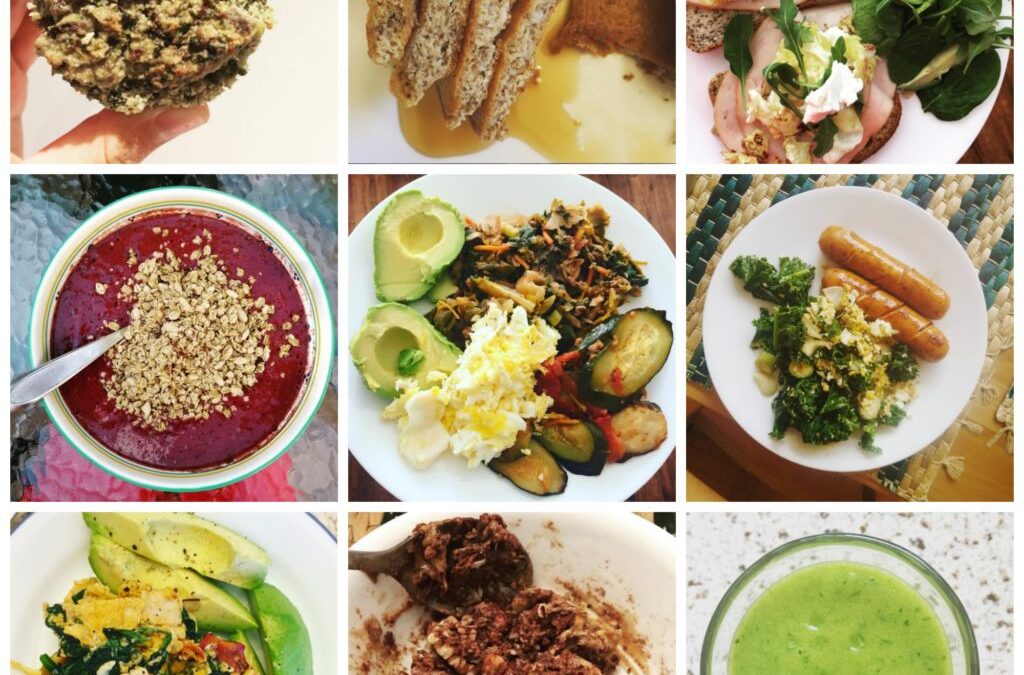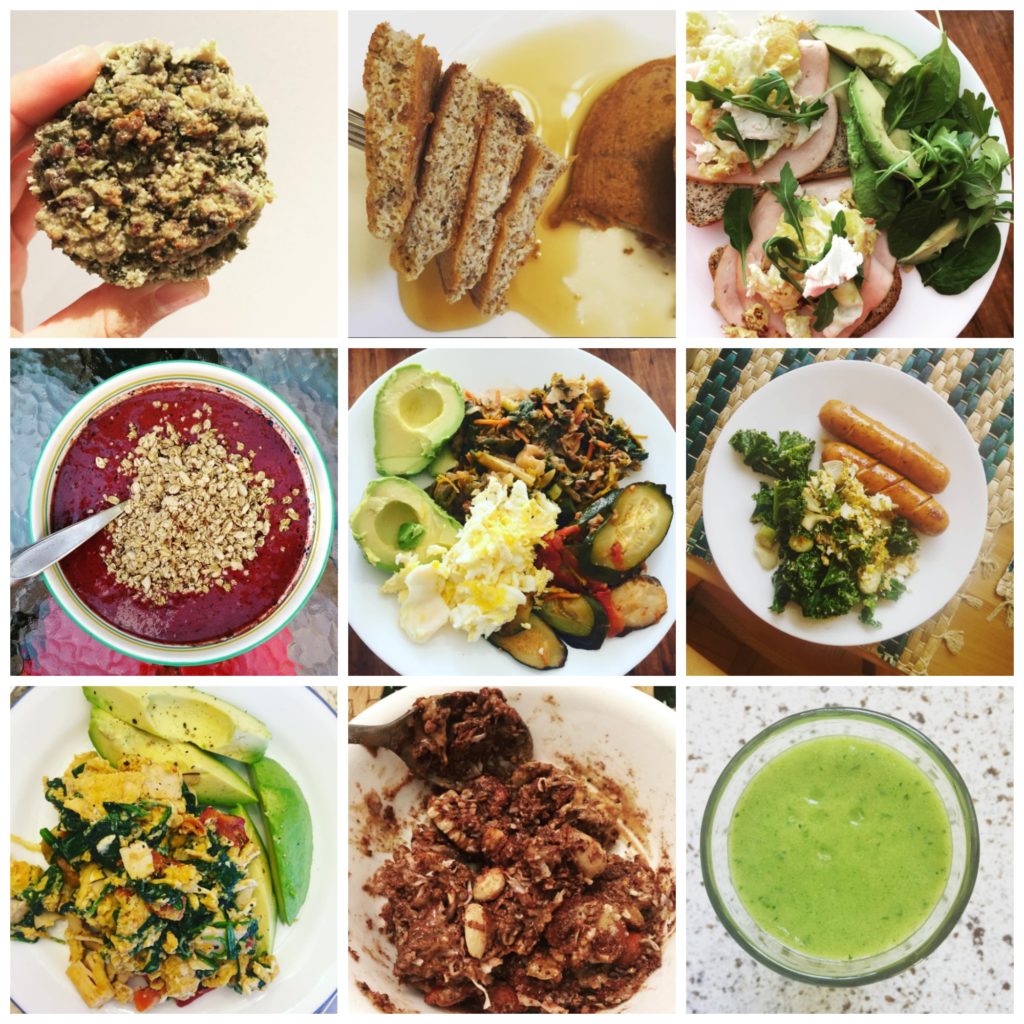As a naturopathic doctor, one of the first things I recommend to my patients is a breakfast overhaul. Adding healthy fats, protein and vegetables to the first morning meal can change your hormonal signalling and improve your energy and mood.
When it comes to writing my patients prescriptions for pills, even natural ones, I tend to be a minimalist. This means I try to limit my supplement recommendations. Depending on my patients’ concerns, I prefer to work with their diets and lifestyles, making useful tweaks and suggestions to their daily routines. I find my patients appreciate this and often stick to these mini changes in the long-term, which means that a) these changes are easy and sustainable and b) they work! When I begin to work with a new patient for the first time, some of the first recommendations I make is that they begin to rethink the way they do breakfast.
The Standard America Diet may be SAD in many ways, but the main meal that brings a tear to my eye is our affectionately termed “most important meal of the day”—breakfast, when we break our nightly fasts and engage in the consumption of low-nutrient, high-carb atrocities like breakfast cereals, muffins (aka mini cakes) and instant oatmeals packed full of sugar.
If the meals we eat in a day could be viewed as a series of performances, then breakfast would be the opening act. It sets the stage for our blood sugar and hormone-regulation for the rest of the day. When we begin our days with simple carbohydrates (the composition of the above-mentioned breakfast foods), we strap ourselves in for a blood-sugar roller coaster ride that throws off the signalling of all the other hormones in the body, taxing our adrenal glands, our sex hormones, our mood and mental health and even setting the stage for weight gain and chronic inflammation.
I tend to believe that some people do genuinely do well without breakfast. There is some research that suggests that fasting for a portion of the day (at least 12 hours a day) can regulate blood sugar and insulin levels and help us manage our weight and day-time energy levels. It can even help us sleep more deeply. However, for those of us who are hungry in the morning (or a few hours after), there is evidence that getting a complete meal into our bodies within the first hour of waking can start the circadian clocks present in our livers and digestive organs, priming us for a day of abundant energy, good digestion, and an efficient metabolism. In fact, the research on intermittent fasting seems to indicate that skipping dinner, rather than breakfast, might be more beneficial, as our bodies are more insulin-sensitive in the morning and therefore more able to use food for fuel, rather than storing it as fat, at that time of the day.
When we first wake up, our cortisol levels should be at their highest. Cortisol is a stress hormone, yes, but also responsible for giving us feelings of wakefulness and alertness. Eating, especially on a consistent schedule, can help boost cortisol levels, thereby boosting early-morning energy levels. Additionally, like the brain, the liver possess its own circadian rhythms. It punches in its time clock for work once we eat our first bite of food or take our first sip of a non-water beverage, allowing us to digest, detoxify, and process certain hormones in the body.
When it comes to the first meal of the day, there are two basic Breakfast Laws I live by:
The first is to get adequate protein. For most people this means eating at LEAST 20, but preferably 30, grams of protein (about the amount in one decent-sized portion of chicken or beef) in the morning. Protein is the building block of the body: it constructs our neurotransmitters, enzymes and the structure of our cells. When we get adequate amounts at meal-times, it keeps blood sugar stable, which balances mood and energy. Those of us who experience the energy tank around 3pm and crave sweets or require caffeine to get through the rest of the day, often notice that our energy remains stable throughout the day when we eat a high-protein breakfast. However, getting 30 grams of protein in the morning means rethinking what a traditional breakfast looks like: one egg only contains about 5 to 7 grams of protein, depending on size. One cup of oatmeal has only 6. Therefore, I suggest my patients concentrate on adding animal products, such as meats, yogurt and eggs, or vegetarian protein sources like tofu, legumes, peanut butter, and protein powder, to their first meal, or to mix different protein sources (such as turkey and eggs) to get their protein levels up to that 20 to 30-gram range.
The second Breakfast Law is to include healthy fats. Breakfast is a meal, arguably the day’s most important, as that’s when our digestive system is working optimally, our insulin receptors are at their most sensitive, and our metabolism is the most revved. Since a balanced meal contains all of the macronutrients, it’s important not to skip fat in the morning. Fat satiates us and keeps blood sugar stable. It nourishes our brain, cell membranes and forms the backbone of our hormones. Ensuring that we include healthy fats like avocado, olive oil, fish oil, nuts, seeds, grass-fed butter, and coconut, keeps us feeling full and energized well into the afternoon, while giving us a boost to our metabolic rate and improving our fat-burning potential. I tend to recommend coconut oil at this time of day, as the medium-chain triglycerides in coconut oil bypass the digestive system and are used as immediate energy, giving us a much-needed morning boost.
Since the patients I work with are often busy individuals with demanding lives who struggle with chronic stress, hormonal imbalances, mental health concerns and digestive issues, I often suggest beginning the day with a ketogenic breakfast. This means having a breakfast that is high in healthy fats, has a decent amount of protein and micronutrients, from leafy greens or other vegetables, and is low in carbohydrates. By avoiding high levels of carbohydrates early in the morning we harness our body’s fast-burning capacity and regulate our blood sugar and insulin levels. This, in turn, balances our other hormones, such as neurotransmitters, stress hormones and sex hormones. It also keeps inflammation levels low. Eating a high-fat, low-carb breakfast encourages the body to make ketone bodies for energy, which have been shown to promote mental alertness and to balance mood. Patients who take on a ketogenic breakfast for a month often report life-changing effects: more energy throughout the day (avoiding that 3pm crash), brighter mood and mental clarity, less sugar cravings, and greater feelings of satiety that bridge them all the way to lunch-time.
Finally, I often recommend getting a serving of micronutrient-dense leafy greens into the morning meal. We North Americans tend to skimp on our vegetables, especially the majorly health-promoting green leafy ones. Getting one or two servings of vegetables out of the way early on in the day is a great way to boost our vegetable intake.
Here are some healthy and easy-to-throw-together alternatives to that greasy breakfast sandwich lying under a warming lamp in your company’s cafeteria. I swear you’ll never look back:
1. Any variation on the home-made omelette/scrambled eggs/breakfast sandwiches. Grab a bunch of your favourite vegetables, leafy greens preferred, and cook them down in a pan. Add scrambled eggs, a few slices of natural turkey breast, leftover steak, salmon, natural sausages, or tofu (if you’re a vegetarian). Play around with different ingredients like olives, sun-dried tomatoes, roasted zucchini and squash, goat cheese, avocado, arugula, etc. If you need some carbs, serve on gluten-free or sourdough bread, or roll up ingredients into the egg.
2. Mini frittatas. Similar to the omelette idea above, mini frittatas are a pre-prepared version for those of us who have limited time in the morning. You can make these out of virtually anything: ground turkey, kale and goat cheese; sun-dried tomatoes, basil, oregano, olives and arugula; avocado, ham, cheddar and broccoli; thai curry paste, coconut milk and cauliflower; even zucchini, spinach, flaxseed and cocoa powder. Cook up your ingredients sans eggs, then throw everything into a blender (add enough so that you can get your 20 to 30 protein grams from one to three frittatas), ground flaxseed and gelatin (for gut-healing and added protein). Pour into muffin cups and bake at 350 for 20-30 minutes or until eggs are cooked through. Freeze them or store them in the fridge, then grab some on your way out the door to warm up at the office.
3. Smoothies. Smoothies are one of my favourite ways to do breakfast, simply because blending everything together gives you the opportunity to pack a bunch of nutrient-rich foods into one easily digestible, portable place. They tend to taste great too, depending on how you do them.
My three general rules of thumb for creating smoothies is to add: 1) Leafy greens: kale, spinach, chard, etc. 2) Protein: usually in the form of protein powder. I like Vega and Sun Warrior, as vegan sources, but whey isolate also works, if you’re ok with dairy. Pick a protein powder that has no added sugar and at least 20 g of protein per scoop. 3) Fat: half an avocado, or a couple of tablespoons of coconut oil, ground flax or nut butters, etc. After following the three rules, feel free to doctor the smoothie up for variety: add berries, banana or honey to make it sweet and palatable; gelatin/collagen, guar gum or chicory root for gut-healing; cocoa powder to make it chocolate-y (who doesn’t want that); or lemon, spirulina or cilantro to boost your body’s detoxifying prowess in the morning. The possibilities are endless.
My go-to smoothie consists of spinach, frozen blueberries, flaxseed, avocado, coconut oil, water and protein powder. I blend those ingredients up and drink them on the go, or I add nuts and granola on top of a thicker blend and eat it with a spoon as a smoothie bowl. I’m usually full until 1-2 pm.
When my patients protest that their morning routine doesn’t allott them sufficient smoothie-prep time, I suggest they add the unblended ingredients to their blender the night before, storing everything in the fridge. In the morning, all they have to do is hobble over to the “blend” button, throw a lid on everything and fling the entire concoction into their lunch bags. Easy peasy.
4. Yogurt bowls. For those who “do dairy”, one cup of greek yogurt has about 25 grams of protein. I tell my patients to get the highest-fat kind they can find (grocery stores mainly carry up to 2%, whereas natural food stores carry higher fat-content brands). This is because 0% fat yogurt is just bad news; skim milk was used to fatten up pigs in the early 20th century by making them hungrier—it was a well-known trick amongst pig farmers that, for whatever reason, never seemed to become common knowledge for humans. I also encourage my patients to opt for unflavoured, unsweetened yogurt to avoid unnecessary sugar and chemicals. Kefir, or fermented milk, contains multiple strains of gut-loving bacteria and is an effective probiotic, so I often recommend that to patients whose guts needs some love.
To the yogurt, add a combination of chia, flaxseeds, nuts, gelatin, coconut oil, cinnamon and berries. You can store everything in a jar in the fridge overnight (or make a big batch) and grab and go on your way to work. For those who are dairy sensitive or lactose intolerant, coconut yogurt is a delicious alternative. It is protein-sparse, however, so getting protein from other sources, or adding a scoop of protein powder or a few tablespoons of gelatin, is needed to round out the macronutrients.
5. Fat bowls: When I’m in the mood for tons of fats, I make a fatty Paleo “granola” out of various nut and seed butters: tahini, peanut butter (the natural kind where the oil rises to the top) and/or almond butter. I add coconut oil, coconut flakes, ground up nuts (walnuts, almonds, brazil nuts, cashews) and flaxseeds. Then I add cocoa powder and a few drops of liquid stevia and a pinch of sea salt. The whole thing is delicious; like a kind of crunchy, healthier Nutella. You can add one to a half scoop of protein powder or gelatin to boost the protein content. Another fat bowl idea is avocado pudding: add one whole avocado, chocolate protein powder, cocoa powder and some liquid stevia together, and mash everything up by hand or blend in a blender.
6. Ketogenic, low-carb pancakes. Blend 3 eggs, 2 tbs of almond butter, 2 tbs of flaxseed, gelatin, a dash of vanilla extract and sea salt to make the batter, then cook like regular pancakes. You can also make these thin by adding a bit more liquid (water, nut milks, coconut milk), and use them as breakfast wraps, wrapping up things like avocado, goat cheese and arugula with them.
7. Leftovers. Most of the time I have non-breakfast food for breakfast. As I’m personally really into the efficiency of batch-cooking, I always have a few servings of protein (chicken, beef or fish) and ready-cooked vegetables in my fridge. I might also have a pot of curry, a stir-fry, paleo chilli or soup in the fridge as well. Many cultures enjoy savoury and spicy foods for breakfast and there’s no reason that leftover curried vegetables and chicken breast don’t make an awesome first meal of the day.









What does the gelatin do in the pancakes??
Hi, Sharon! I adds more protein, and is a good source of gut-healing collagen and mind-calming glcyine. Other than that, you can skip it, as the recipe doesn’t require it.
Dr. Talia can you let me know what’s best to eat to increase iron